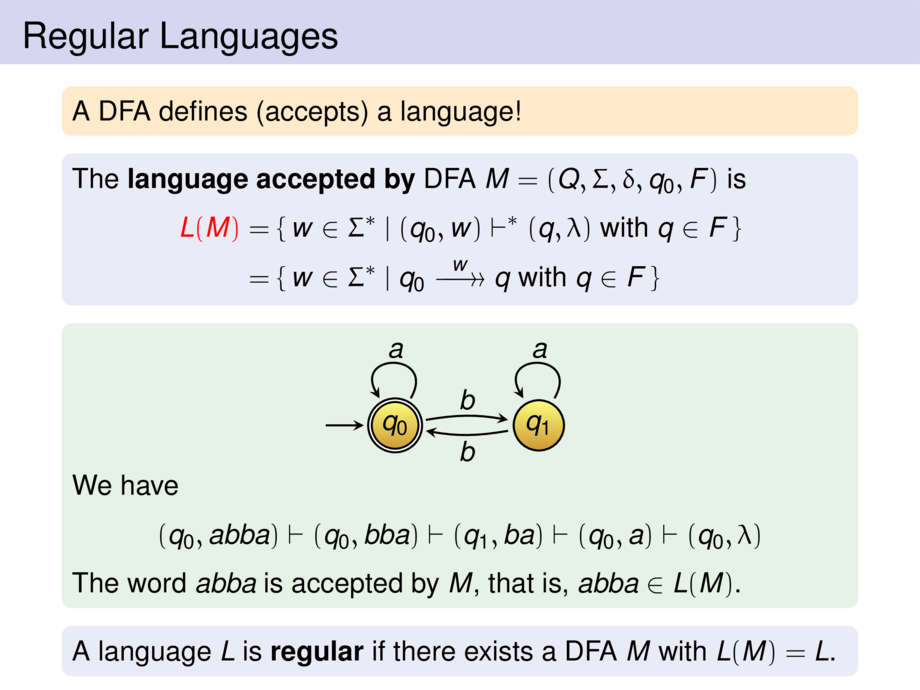



































































































34/122
\begin{frame}{Regular Languages}
\begin{goal}{}
A DFA defines (accepts) a language!
\end{goal}
\pause
\begin{block}{}
The \emph{language accepted by} DFA $M = (Q,\Sigma,\delta,q_0,F)$ is
\begin{talign}
\alert{L(M)}
&= \{\, w \in \Sigma^* \mid (q_0,w) \vdash^* (q,\lambda) \text{ with } q \in F \,\}\\
&= \{\, w \in \Sigma^* \mid q_0 \apath{w} q \text{ with } q \in F \,\}
\end{talign}
\end{block}
\pause
\begin{exampleblock}{}
\begin{center}
\input{tikz/dfa_even_bs.tex}
\vspace{-2ex}
\end{center}
We have
\begin{talign}
(q_0,abba) \vdash
(q_0,bba) \vdash
(q_1,ba) \vdash
(q_0,a) \vdash
(q_0,\lambda)
\end{talign}
\pause
The word $abba$ is accepted by $M$, that is, $abba \in L(M)$.
\end{exampleblock}
\pause
\begin{block}{}
A language $L$ is \emph{regular} if there exists a DFA $M$ with $L(M) = L$.
\end{block}
\bigskip
\end{frame}

